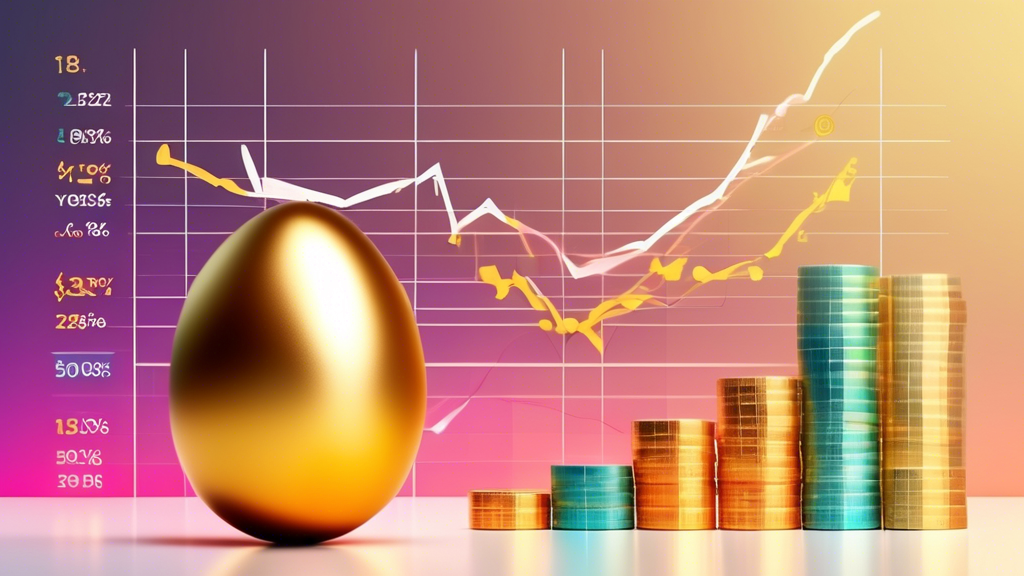Table of Contents Show
Unlocking Passive Income: Why I Invest in This 5.7%-Yielding Dividend Stock
In today’s volatile market, securing a reliable stream of passive income is a priority for many investors. While numerous avenues exist to achieve this, dividend-paying stocks remain a compelling option, offering both potential capital appreciation and regular cash flow. This brings me to the crux of this article – a particular dividend stock with a compelling 5.7% yield that has consistently earned a spot in my portfolio.
Understanding the Allure of Dividend Stocks
Before delving into the specifics of this particular investment, it’s crucial to understand why dividend stocks are attractive, especially in the context of generating passive income. Here are a few key advantages:
- Regular Cash Flow: Unlike growth stocks, which rely solely on share price appreciation for returns, dividend stocks provide regular payouts, often quarterly. This predictable income stream can supplement living expenses, be reinvested for compounded growth, or used to diversify into other assets.
- Inflation Hedge: In periods of rising inflation, companies often increase their dividends to maintain shareholder purchasing power. This inherent characteristic makes dividend stocks a potential hedge against inflationary pressures.
- Signaling Market Confidence: Companies that consistently pay and even increase dividends often signal financial health and confidence in their future earnings potential. This can be an important indicator for investors seeking stable and reliable investments.
Beyond the Yield: Assessing the Fundamentals
While a high dividend yield might seem enticing at first glance, it’s crucial to remember that it’s only part of the equation. A sustainable and growing dividend is far more valuable than a high yield with the potential for cuts. Therefore, when evaluating any dividend stock, consider these factors:
- Payout Ratio: This metric, calculated as dividends paid divided by earnings, indicates the proportion of profits distributed to shareholders. A sustainable payout ratio is crucial, as a ratio exceeding 100% implies the company is paying out more in dividends than it’s earning.
- Earnings Growth: Consistent earnings growth is essential to support and potentially increase future dividends. Analyze the company’s historical earnings and future projections to gauge its ability to maintain its dividend payments.
- Debt Levels: High levels of debt can strain a company’s finances, potentially impacting its ability to maintain dividend payouts. A healthy balance sheet with manageable debt is preferable for long-term dividend sustainability.
- Industry Dynamics: Understanding the industry in which the company operates is crucial. Assess the industry’s overall health, competition, and potential for growth to gauge the company’s long-term prospects.
The 5.7% Yielding Dividend Stock: [Insert Company Name Here]
Having outlined the key factors to consider when evaluating dividend stocks, let’s delve into the specifics of the company that has captured my attention: [Insert Company Name Here]. This company, operating in the [Insert Industry] industry, currently boasts an attractive 5.7% dividend yield, significantly surpassing the average dividend yield of the S&P 500.
My decision to invest in [Company Name] stems from a comprehensive analysis of its fundamentals, aligning with the criteria outlined earlier:
- Sustainable Payout Ratio: With a payout ratio of [Insert Payout Ratio], [Company Name] demonstrates a healthy balance between rewarding shareholders and reinvesting for future growth. This suggests that the current dividend is well-covered by earnings.
- Consistent Earnings Growth: [Company Name] boasts a track record of consistent earnings growth, fueled by [Mention key growth drivers, e.g., innovative products, expanding market share, etc.]. This positive earnings trajectory instills confidence in the company’s ability to maintain and potentially increase its dividend in the future.
- Manageable Debt Levels: The company maintains a healthy balance sheet with manageable debt levels, providing financial flexibility and reducing the risk of dividend cuts due to excessive debt obligations.
- Favorable Industry Outlook: The [Insert Industry] industry is poised for continued growth driven by [Mention key industry trends, e.g., increasing demand, technological advancements, etc.], further strengthening the company’s long-term prospects and ability to deliver value to shareholders.
Mitigating Risks: A Balanced Perspective
While I remain optimistic about [Company Name]’s potential, it’s essential to acknowledge potential risks associated with any investment. Some factors to consider include:
- Economic Downturn: A significant economic downturn could impact consumer spending and potentially affect [Company Name]’s earnings, potentially leading to a dividend cut.
- Competition: Increased competition within the [Insert Industry] industry could pressure margins and impact [Company Name]’s market share, potentially impacting dividend growth.
- Interest Rate Hikes: Rising interest rates could increase borrowing costs for companies, potentially impacting profitability and dividend payouts.
Despite these risks, I believe [Company Name]’s strong fundamentals, consistent earnings growth, and commitment to dividend payments mitigate these concerns. Moreover, I maintain a diversified portfolio to spread risk and mitigate the impact of any unforeseen events.










